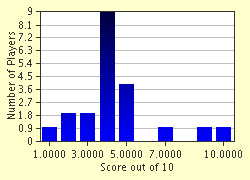Quiz Answer Key and Fun Facts
1. One of the earliest business ventures of the Tata group was the Empress Mills, a textile manufacturing unit set up in 1877. At the end of the 20th century, did the group still have an operational textile mill?
2. Another early venture was in the area of hospitality. The group opened one of the first indigenous 5-star hotels in Bombay (now Mumbai) in 1903. After which iconic Indian monument was it named?
3. After the death of Jamsetji, the mantle of chairman of the group passed on to his elder son, Dorabji Tata. In 1907, he was able to complete his father's dream of setting up a steel plant in India. Which Indian city is home to this plant?
4. The group was led briefly by Nowroji Saklatwala and after his death, JRD Tata, who was Jamsetji's cousin's son, took over. JRD had a keen interest in flying and the first to obtain a flying license in India. He also set up India's first commercial airlines. At the end of the 20th century, was the Tata group still involved in its operations?
5. Tata group entered into a joint venture with the tea major James Finley in 1964. In the 1980s the Tatas bought out their partner's stake to set up Tata Tea which as the name suggests was involved in various aspects of tea manufacturing and selling. Which British tea manufacturer did the company acquire in the new millennium?
6. Tata Motors was formed in 1954 and initially only manufactured commercial vehicles. Which car launched by the company in 1998 was the first wholly indigenous Indian car?
7. Titan was initially set up as a watch manufacturer. Which of these divisions was NOT added later on?
8. Since the turn of the millennium, most of the revenue earned by the holding company, Tata Sons, has been through dividend income from Tata Consultancy Services. What field does the company operate in?
9. Finally to the salt part of the quiz title. Tata Chemicals is the group arm which produces salt along with other food products like pulses. What is the name of the low cost water purifier manufactured by the company?
10. The Tata group has also set up notable educational institutions across the country. Which of these was NOT originally founded by the Tatas?
Source: Author
zorba_scank
This quiz was reviewed by FunTrivia editor
stedman before going online.
Any errors found in FunTrivia content are routinely corrected through our feedback system.

